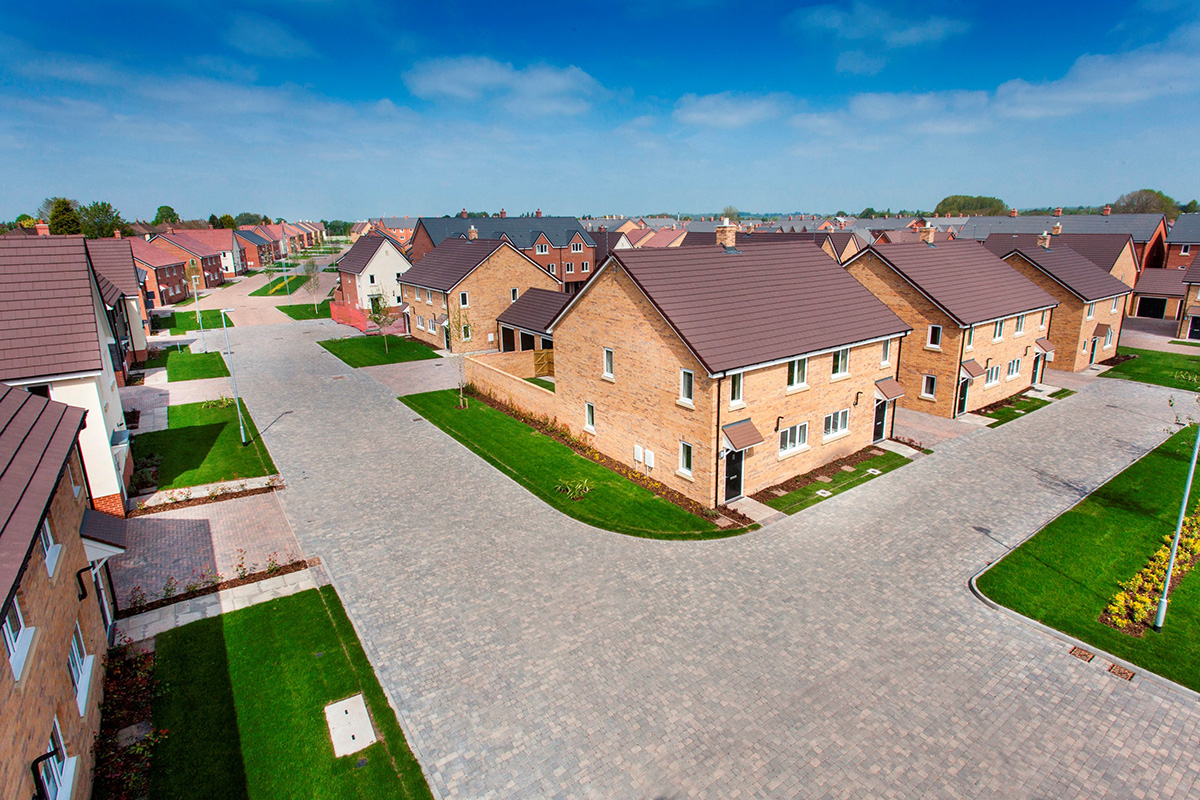
A quality roof can last for 50 years or more, so it’s important to choose the right materials. Many looking for pitched roofing opt for tiles manufactured from natural materials as they are believed to be superior. Mark Parsons, technical director at Russell Roof Tiles, explores why so many still believe this ‘myth’, when concrete could in fact be the best roofing solution.
Growing demand
In the UK, there are four main materials used for pitched roof tiles – concrete, slate, clay, and stone. Despite it having been first used on roofs in Roman times, concrete roof tiles are relatively new when compared to clay or slate tiles, which have been around since the first century.
Now, concrete roof tiles account for 60% of the housing market, which in contrast to natural slates only account for 20% of the total, while clay tiles make up around 10%. The remaining is made up of various other materials. Concrete continues to increase in popularity with the annual production of concrete roof tiles growing in 2021, year-on-year.
The myth
With increasing pressures to meet building targets, specifically for new homes, whilst looking for sustainable materials, as well as cost-effective products is a challenge. However, using concrete roof tiles can provide both a good value and a sustainable solution.
When manufacturing concrete roof tiles, the process is very different to producing clay tiles. The main distinction is that for concrete tiles instead of firing them in kilns, they are cured at much lower temperatures for a shorter amount of time, whereas clay tiles require extensive power to fire the tiles in a 1,000+°C kiln for up to 48 hours.
This means that concrete roof tiles can be made on a far larger scale than clay tiles and are much easier to procure, which makes the ordering process easier and product availability more reliable.
The properties of concrete also mean that it will not rot or gather mould, which is a concern with other types of roofing materials and is a popular option for retrofit projects as well as new builds.
Some of these natural materials have other issues such as weight, availability, cost and sustainability. What many don’t realise is concrete provides a number of benefits and the difference between concrete, clay and slate is not always as clear cut as first thought.
Busting the myth
At a time when the construction and housing industries continue to face challenges, the need to futureproof all housing stock has become more important than ever. Therefore, there’s no better time than now to look at innovative ways to not only save on cost but also improve longevity. One way of doing this is by using concrete roof tiles as they can last up to 60 years, doubling the lifespan of clay tiles which have a lifespan of around 30 years.
Concrete roof tiles also provide a quick, yet cost-effective solution, when time is of the essence. At two-thirds the thickness of a normal concrete tile, the product is easier to handle, has an easy interlocking design that can be fixed quickly and efficiently and helps to speed up the installation process. This ensures a project can be delivered on time and within budget.
Reflecting regional trends
Much of the popularity of concrete is a result of its ability to replicate many indigenous regional materials. Concrete tiles are mainly produced in a variety of natural profiles and colours including clay, slate, or stone.
The variety of colours and textures within the concrete tile range cater for the huge demand from homeowners and designers alike.
At Russell Roof Tiles, we have invested heavily in creating products which imitate natural materials for a visually pleasing and authentic look. This can help widen the choice and selection of concrete tiles which ensures it meets specific planning requirements without compromising on cost or sustainability.
Supplying a suitable specification
As manufacturers, we also work closely with planners, developers and architects to ensure that they have the best fixing specification and that all the necessary factors have been taken into consideration, including regional trends. This allows us to offer the assurance of a guaranteed RussSpec – a 15-year guarantee incorporating all of our whole roof solutions.
As a result, planners and housing associations are in a stronger position to ensure that each roof is sustainable and meets local requirements from the start of any project.












